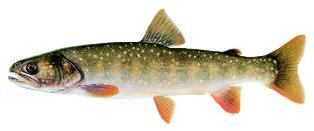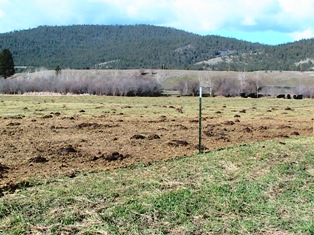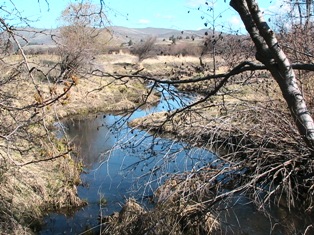
Much of the Reservation is still rural and agricultural in nature. Reservation lands face accelerated development pressures due to the proximity of rapidly growing urban centers at Missoula and Kalispell. Current activities and projects such as large-scale highway expansions and multiple wastewater facility upgrades will continue for many years to come. Resident population on the Reservation is projected to increase at an average rate of 424 to 463 new residents per year from 1994 to 2025 for a 50% increase in total resident population. Rural areas are now being subdivided and developed for residential, commercial, and light industrial use.
Nonpoint Source (NPS) pollution, unlike pollution from industrial and sewage treatment plants, comes from many diffuse sources. NPS pollution is caused by rainfall or snowmelt moving over and through the ground. As the runoff moves, it picks up and carries away natural and human-made pollutants, finally depositing them into lakes, rivers, wetlands, coastal waters, and even our underground sources of drinking water. These pollutants include:
- Excess fertilizers, herbicides, and insecticides from agricultural lands and residential areas;
- Oil, grease, and toxic chemicals from urban runoff and energy production;
- Sediment from improperly managed construction sites, crop and forest lands, and eroding streambanks;
- Salt from irrigation practices and acid drainage from abandoned mines;
- Bacteria and nutrients from livestock, pet wastes, and faulty septic systems;
By reducing pollution inputs to tribal rivers and streams the NPS program is helping to restore these waters to a more natural state. One goal of this restoration work is to facilitate the re-introduction of native species such as Bull Trout. Bull Trout can only flourish in a narrow set of environmental conditions and their presence is indicative of a healthy watershed.

An example of river restoration projects currently being undertaken by CSKTs NPS program can be found on the Little Bitterroot River, in the northwestern part of the Reservation.
Little Bitterroot River is clearly the most impaired of all the major tributaries to the lower Flathead River. A century of hydro-modification and grazing have left a heavy mark on this semi-arid valley floor stream. The 2002 CSKT Water Quality Assessment Report lists the lower Little Bitterroot as not supporting aquatic life, drinking water, or recreation uses. One of the Non Point Source Programs goals is restoration of the Little Bitterroot River in order to make it a viable habitat for wildlife, such as native Bull Trout. We are currently focusing on a mile segment of the river along the McDonald ranch, which is located near Niarada. As part of a grant funded by the EPA, the NPS program was able to place fencing along this segment. The fencing is keeping cattle from grazing and defecating directly in and around the Little Bitterroot River corridor in this area. The effects of fencing along the Little Bitterroot corridor can clearly be seen in the photo.
The Little Bitterroot directly above the ranch has more of a natural configuration (meanders and pools), and is more heavily vegetated than the river reach immediately below the ranch. This allows for a more suitable fish and wildlife habitat. Work to restore the lower segment of the Little Bitterroot to a more natural configuration will be performed this year. This restoration work will include the construction of 2 to 3 meanders and creation of adjacent pools protected with vegetation to allow more suitable habitat for fish.


Restoration work on this project is expected to be completed in Spring, 2008. It is hoped that this project will help generate other potential river restoration projects on the reservation. For more information on the NPS program please contact the NPS Program Coordinator,Chauncey Means. at 883-2888 ext. 7360.
